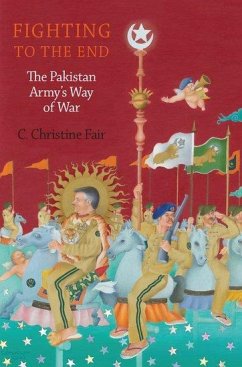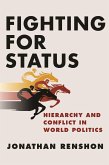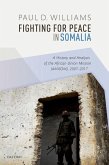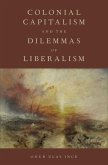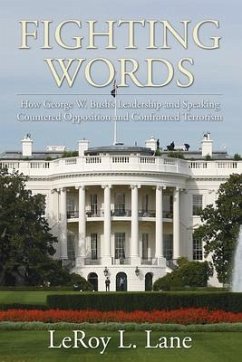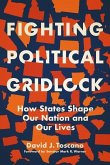Schade – dieser Artikel ist leider ausverkauft. Sobald wir wissen, ob und wann der Artikel wieder verfügbar ist, informieren wir Sie an dieser Stelle.
- Gebundenes Buch
- Merkliste
- Auf die Merkliste
- Bewerten Bewerten
- Teilen
- Produkt teilen
- Produkterinnerung
- Produkterinnerung
The Pakistan army is poised for perpetual conflict with India which it cannot win militarily or politically. What explains Pakistan's persistent revisionism despite increasing costs and decreasing likelihood of success? This book argues that an understanding of the army's strategic culture explains its willingness to fight to the end.
Andere Kunden interessierten sich auch für
![Fighting for Status Fighting for Status]() Jonathan RenshonFighting for Status38,99 €
Jonathan RenshonFighting for Status38,99 €![Fighting for Peace in Somalia Fighting for Peace in Somalia]() Paul D WilliamsFighting for Peace in Somalia156,99 €
Paul D WilliamsFighting for Peace in Somalia156,99 €![Colonial Capitalism and the Dilemmas of Liberalism Colonial Capitalism and the Dilemmas of Liberalism]() Onur Ulas InceColonial Capitalism and the Dilemmas of Liberalism156,99 €
Onur Ulas InceColonial Capitalism and the Dilemmas of Liberalism156,99 €![Fighting Words: How George W. Bush's Leadership and Speaking Countered Opposition and Confronted Terrorism Fighting Words: How George W. Bush's Leadership and Speaking Countered Opposition and Confronted Terrorism]() Leroy L. LaneFighting Words: How George W. Bush's Leadership and Speaking Countered Opposition and Confronted Terrorism52,99 €
Leroy L. LaneFighting Words: How George W. Bush's Leadership and Speaking Countered Opposition and Confronted Terrorism52,99 €![Fighting Political Gridlock Fighting Political Gridlock]() David J ToscanoFighting Political Gridlock27,99 €
David J ToscanoFighting Political Gridlock27,99 €![Fighting for the Speakership Fighting for the Speakership]() Jeffery A JenkinsFighting for the Speakership128,99 €
Jeffery A JenkinsFighting for the Speakership128,99 €![Fighting Back Fighting Back]() Fighting Back150,99 €
Fighting Back150,99 €-
-
The Pakistan army is poised for perpetual conflict with India which it cannot win militarily or politically. What explains Pakistan's persistent revisionism despite increasing costs and decreasing likelihood of success? This book argues that an understanding of the army's strategic culture explains its willingness to fight to the end.
Produktdetails
- Produktdetails
- Verlag: Oxford University Press
- Seitenzahl: 364
- Erscheinungstermin: 27. Mai 2014
- Englisch
- Abmessung: 241mm x 161mm x 32mm
- Gewicht: 609g
- ISBN-13: 9780199892709
- ISBN-10: 0199892709
- Artikelnr.: 40028421
- Herstellerkennzeichnung
- Libri GmbH
- Europaallee 1
- 36244 Bad Hersfeld
- gpsr@libri.de
- Verlag: Oxford University Press
- Seitenzahl: 364
- Erscheinungstermin: 27. Mai 2014
- Englisch
- Abmessung: 241mm x 161mm x 32mm
- Gewicht: 609g
- ISBN-13: 9780199892709
- ISBN-10: 0199892709
- Artikelnr.: 40028421
- Herstellerkennzeichnung
- Libri GmbH
- Europaallee 1
- 36244 Bad Hersfeld
- gpsr@libri.de
C. Christine Fair is an Assistant Professor in the Security Studies Program within Georgetown University's Edmund A. Walsh School of Foreign Service. She previously served as a senior political scientist with the RAND Corporation, a political officer with the United Nations Assistance Mission to Afghanistan in Kabul, and a senior research associate at USIP's Center for Conflict Analysis and Prevention. Her research focuses on political and military affairs in South Asia.
* Acknowledgments
* Chapter 1. Introduction
* The Argument: Explaining Pakistan's Persistent Revisionism In the
Face of Repeated Defeats
* Organization of this Volume
* Chapter 2. Can Strategic Culture Explain the Pakistan Army's
Persistent Revisionism?
* Pakistan's Enduring and Expanding Revisionism
* Explaining Persistent Revisionism
* Strategic Culture Wars
* Pakistan: An Army with a Country
* Reproducing Culture: Recruitment in the Pakistan Army
* Methods and Sources of this Study
* Chapter 3. Born an Insecure State
* Cracking the Raj
* Imagining Pakistan
* The Problem of the Princely States
* Untangling the Punjab
* Breaking Up the Indian Army
* Historical Legacies: A Punjabi Army
* Building a Modern Army
* Table 2.1: Corps and Locations
* Implications for the Pakistan Army's Strategic Culture
* Chapter 4. The Army's Defense of Pakistan's 'Ideological Frontiers'
* The Ideology of Pakistan
* The Army's Embrace of the Ideology of Pakistan
* The Army's Methods of Islamization
* The Army's Instrumentalization of Islam
* Implications
* Chapter 5. Pakistan's Quest for Strategic Depth
* British Management of the Frontier: The Great Game
* Pakistan's Army Seeks Strategic Depth: Managing Pakistan's Frontier
and Beyond
* The Army Manages the Afghan Threat
* The Rise and Fall of the Taliban
* The Army's and the Internal Threat on the 'Frontier'
* Implications: Is the Past Prologue for Afghanistan and the Frontier?
* Chapter 6. India under the Pakistan Army's Gaze
* Multiple Crises and Four Wars
* India: Through the Eyes of the Pakistan Army
* Conclusions and Implications
* Chapter 7. Seeking Security through Alliances
* Pursuing the Americans: An Alliance for Survival
* The Pakistan Tilt
* Chasing China: The All-Weather Friend
* The Strains of War
* Pakistan's Relations with the United States and China through the
Eyes of the Army
* Conclusions and Implications
* Chapter 8. Seeking Security under a Nuclear Umbrella
* Origins of Pakistan's Nuclear Program
* Proliferation Under the Eye of the State
* Nuclear Doctrine and Use
* Risk Taking Under an Expanding Nuclear Umbrella
* As Bad As it Gets?
* Table 8.1 Cross Tabulations of Conflict Months by Nuclear Status
* Table 8.2: Conflict Rate by Nuclear Period
* Conclusions and Implications
* Chapter 9. Jihad under the Nuclear Umbrella
* Origins of Pakistan's Use of Non-state Actors
* From Peoples' War to Low Intensity Conflict under a Nuclear Umbrella
* Pakistan's Militant Assets
* Pakistani Support for the Militants?
* The Internal Jihad: A Case Study of Lashkar-e-Taiba
* Conclusions and Implications
* Chapter 10. Is the Past Prologue
* Endogenous Game Changers
* Democratic Transition?
* Economic Shocks-For Better and for Worse
* Civil and Un-Civil Society: Impetus for Change?
* Change from Within the Army?
* Table 10.5. Punjabis versus Baloch in Balochistan
* Exogenous Sources of Change?
* Conclusions: Prospects for Change from Within and Without?
* Chapter 11. The Army's Strategic Culture and Implications for
International Security
* Managing Pakistan's Persistent Revisionism?
* References
* Appendices: Maps
* Chapter 1. Introduction
* The Argument: Explaining Pakistan's Persistent Revisionism In the
Face of Repeated Defeats
* Organization of this Volume
* Chapter 2. Can Strategic Culture Explain the Pakistan Army's
Persistent Revisionism?
* Pakistan's Enduring and Expanding Revisionism
* Explaining Persistent Revisionism
* Strategic Culture Wars
* Pakistan: An Army with a Country
* Reproducing Culture: Recruitment in the Pakistan Army
* Methods and Sources of this Study
* Chapter 3. Born an Insecure State
* Cracking the Raj
* Imagining Pakistan
* The Problem of the Princely States
* Untangling the Punjab
* Breaking Up the Indian Army
* Historical Legacies: A Punjabi Army
* Building a Modern Army
* Table 2.1: Corps and Locations
* Implications for the Pakistan Army's Strategic Culture
* Chapter 4. The Army's Defense of Pakistan's 'Ideological Frontiers'
* The Ideology of Pakistan
* The Army's Embrace of the Ideology of Pakistan
* The Army's Methods of Islamization
* The Army's Instrumentalization of Islam
* Implications
* Chapter 5. Pakistan's Quest for Strategic Depth
* British Management of the Frontier: The Great Game
* Pakistan's Army Seeks Strategic Depth: Managing Pakistan's Frontier
and Beyond
* The Army Manages the Afghan Threat
* The Rise and Fall of the Taliban
* The Army's and the Internal Threat on the 'Frontier'
* Implications: Is the Past Prologue for Afghanistan and the Frontier?
* Chapter 6. India under the Pakistan Army's Gaze
* Multiple Crises and Four Wars
* India: Through the Eyes of the Pakistan Army
* Conclusions and Implications
* Chapter 7. Seeking Security through Alliances
* Pursuing the Americans: An Alliance for Survival
* The Pakistan Tilt
* Chasing China: The All-Weather Friend
* The Strains of War
* Pakistan's Relations with the United States and China through the
Eyes of the Army
* Conclusions and Implications
* Chapter 8. Seeking Security under a Nuclear Umbrella
* Origins of Pakistan's Nuclear Program
* Proliferation Under the Eye of the State
* Nuclear Doctrine and Use
* Risk Taking Under an Expanding Nuclear Umbrella
* As Bad As it Gets?
* Table 8.1 Cross Tabulations of Conflict Months by Nuclear Status
* Table 8.2: Conflict Rate by Nuclear Period
* Conclusions and Implications
* Chapter 9. Jihad under the Nuclear Umbrella
* Origins of Pakistan's Use of Non-state Actors
* From Peoples' War to Low Intensity Conflict under a Nuclear Umbrella
* Pakistan's Militant Assets
* Pakistani Support for the Militants?
* The Internal Jihad: A Case Study of Lashkar-e-Taiba
* Conclusions and Implications
* Chapter 10. Is the Past Prologue
* Endogenous Game Changers
* Democratic Transition?
* Economic Shocks-For Better and for Worse
* Civil and Un-Civil Society: Impetus for Change?
* Change from Within the Army?
* Table 10.5. Punjabis versus Baloch in Balochistan
* Exogenous Sources of Change?
* Conclusions: Prospects for Change from Within and Without?
* Chapter 11. The Army's Strategic Culture and Implications for
International Security
* Managing Pakistan's Persistent Revisionism?
* References
* Appendices: Maps
* Acknowledgments
* Chapter 1. Introduction
* The Argument: Explaining Pakistan's Persistent Revisionism In the
Face of Repeated Defeats
* Organization of this Volume
* Chapter 2. Can Strategic Culture Explain the Pakistan Army's
Persistent Revisionism?
* Pakistan's Enduring and Expanding Revisionism
* Explaining Persistent Revisionism
* Strategic Culture Wars
* Pakistan: An Army with a Country
* Reproducing Culture: Recruitment in the Pakistan Army
* Methods and Sources of this Study
* Chapter 3. Born an Insecure State
* Cracking the Raj
* Imagining Pakistan
* The Problem of the Princely States
* Untangling the Punjab
* Breaking Up the Indian Army
* Historical Legacies: A Punjabi Army
* Building a Modern Army
* Table 2.1: Corps and Locations
* Implications for the Pakistan Army's Strategic Culture
* Chapter 4. The Army's Defense of Pakistan's 'Ideological Frontiers'
* The Ideology of Pakistan
* The Army's Embrace of the Ideology of Pakistan
* The Army's Methods of Islamization
* The Army's Instrumentalization of Islam
* Implications
* Chapter 5. Pakistan's Quest for Strategic Depth
* British Management of the Frontier: The Great Game
* Pakistan's Army Seeks Strategic Depth: Managing Pakistan's Frontier
and Beyond
* The Army Manages the Afghan Threat
* The Rise and Fall of the Taliban
* The Army's and the Internal Threat on the 'Frontier'
* Implications: Is the Past Prologue for Afghanistan and the Frontier?
* Chapter 6. India under the Pakistan Army's Gaze
* Multiple Crises and Four Wars
* India: Through the Eyes of the Pakistan Army
* Conclusions and Implications
* Chapter 7. Seeking Security through Alliances
* Pursuing the Americans: An Alliance for Survival
* The Pakistan Tilt
* Chasing China: The All-Weather Friend
* The Strains of War
* Pakistan's Relations with the United States and China through the
Eyes of the Army
* Conclusions and Implications
* Chapter 8. Seeking Security under a Nuclear Umbrella
* Origins of Pakistan's Nuclear Program
* Proliferation Under the Eye of the State
* Nuclear Doctrine and Use
* Risk Taking Under an Expanding Nuclear Umbrella
* As Bad As it Gets?
* Table 8.1 Cross Tabulations of Conflict Months by Nuclear Status
* Table 8.2: Conflict Rate by Nuclear Period
* Conclusions and Implications
* Chapter 9. Jihad under the Nuclear Umbrella
* Origins of Pakistan's Use of Non-state Actors
* From Peoples' War to Low Intensity Conflict under a Nuclear Umbrella
* Pakistan's Militant Assets
* Pakistani Support for the Militants?
* The Internal Jihad: A Case Study of Lashkar-e-Taiba
* Conclusions and Implications
* Chapter 10. Is the Past Prologue
* Endogenous Game Changers
* Democratic Transition?
* Economic Shocks-For Better and for Worse
* Civil and Un-Civil Society: Impetus for Change?
* Change from Within the Army?
* Table 10.5. Punjabis versus Baloch in Balochistan
* Exogenous Sources of Change?
* Conclusions: Prospects for Change from Within and Without?
* Chapter 11. The Army's Strategic Culture and Implications for
International Security
* Managing Pakistan's Persistent Revisionism?
* References
* Appendices: Maps
* Chapter 1. Introduction
* The Argument: Explaining Pakistan's Persistent Revisionism In the
Face of Repeated Defeats
* Organization of this Volume
* Chapter 2. Can Strategic Culture Explain the Pakistan Army's
Persistent Revisionism?
* Pakistan's Enduring and Expanding Revisionism
* Explaining Persistent Revisionism
* Strategic Culture Wars
* Pakistan: An Army with a Country
* Reproducing Culture: Recruitment in the Pakistan Army
* Methods and Sources of this Study
* Chapter 3. Born an Insecure State
* Cracking the Raj
* Imagining Pakistan
* The Problem of the Princely States
* Untangling the Punjab
* Breaking Up the Indian Army
* Historical Legacies: A Punjabi Army
* Building a Modern Army
* Table 2.1: Corps and Locations
* Implications for the Pakistan Army's Strategic Culture
* Chapter 4. The Army's Defense of Pakistan's 'Ideological Frontiers'
* The Ideology of Pakistan
* The Army's Embrace of the Ideology of Pakistan
* The Army's Methods of Islamization
* The Army's Instrumentalization of Islam
* Implications
* Chapter 5. Pakistan's Quest for Strategic Depth
* British Management of the Frontier: The Great Game
* Pakistan's Army Seeks Strategic Depth: Managing Pakistan's Frontier
and Beyond
* The Army Manages the Afghan Threat
* The Rise and Fall of the Taliban
* The Army's and the Internal Threat on the 'Frontier'
* Implications: Is the Past Prologue for Afghanistan and the Frontier?
* Chapter 6. India under the Pakistan Army's Gaze
* Multiple Crises and Four Wars
* India: Through the Eyes of the Pakistan Army
* Conclusions and Implications
* Chapter 7. Seeking Security through Alliances
* Pursuing the Americans: An Alliance for Survival
* The Pakistan Tilt
* Chasing China: The All-Weather Friend
* The Strains of War
* Pakistan's Relations with the United States and China through the
Eyes of the Army
* Conclusions and Implications
* Chapter 8. Seeking Security under a Nuclear Umbrella
* Origins of Pakistan's Nuclear Program
* Proliferation Under the Eye of the State
* Nuclear Doctrine and Use
* Risk Taking Under an Expanding Nuclear Umbrella
* As Bad As it Gets?
* Table 8.1 Cross Tabulations of Conflict Months by Nuclear Status
* Table 8.2: Conflict Rate by Nuclear Period
* Conclusions and Implications
* Chapter 9. Jihad under the Nuclear Umbrella
* Origins of Pakistan's Use of Non-state Actors
* From Peoples' War to Low Intensity Conflict under a Nuclear Umbrella
* Pakistan's Militant Assets
* Pakistani Support for the Militants?
* The Internal Jihad: A Case Study of Lashkar-e-Taiba
* Conclusions and Implications
* Chapter 10. Is the Past Prologue
* Endogenous Game Changers
* Democratic Transition?
* Economic Shocks-For Better and for Worse
* Civil and Un-Civil Society: Impetus for Change?
* Change from Within the Army?
* Table 10.5. Punjabis versus Baloch in Balochistan
* Exogenous Sources of Change?
* Conclusions: Prospects for Change from Within and Without?
* Chapter 11. The Army's Strategic Culture and Implications for
International Security
* Managing Pakistan's Persistent Revisionism?
* References
* Appendices: Maps

